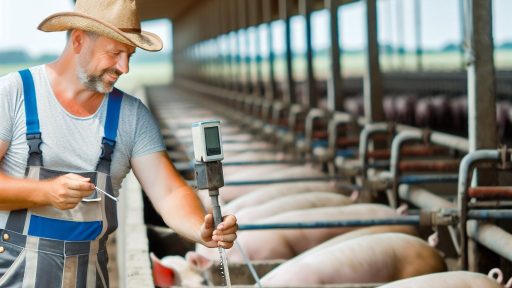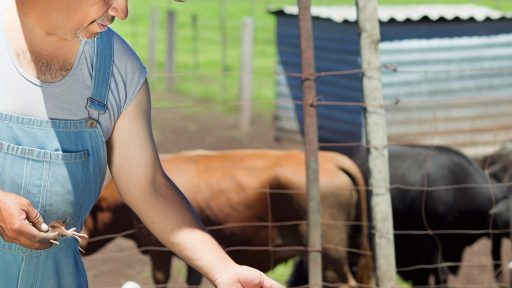Introduction to Weed Control in Pastures
Weed control is essential for maintaining high-quality pastures.
Effective weed management enhances forage quality and livestock health.
Moreover, it helps prevent the spread of invasive plant species.
Pastures with aggressive weeds can suffer significant economic losses.
Therefore, understanding various control methods is critical.
Understanding the Impact of Weeds
Weeds compete with desirable plants for nutrients and water.
This competition decreases overall pasture productivity.
Additionally, some weeds pose health risks to livestock.
For instance, plants like yellow star thistle can be toxic.
Consequently, controlling weeds ensures a healthier environment for animals.
Weed Control Strategies
Utilizing a combination of strategies maximizes weed control effectiveness.
Various methods include mechanical, chemical, and cultural practices.
Each method addresses specific issues within the pasture ecosystem.
Mechanical Control Methods
Mechanical control involves physical removal of weeds.
Tilling and mowing are common mechanical techniques.
Transform Your Agribusiness
Unlock your farm's potential with expert advice tailored to your needs. Get actionable steps that drive real results.
Get StartedRegular mowing prevents weeds from flowering and spreading.
However, this method requires consistent effort and monitoring.
Chemical Control Methods
Chemical herbicides offer a quick solution to weed problems.
Selective herbicides target specific weed types while preserving grass.
Proper application timing enhances effectiveness and reduces negative impacts.
However, integrated use with other methods is recommended.
Cultural Control Methods
Cultural practices focus on improving pasture health.
Proper fertilization and irrigation promote desirable plant growth.
Additionally, crop rotation helps disrupt weed life cycles.
Livestock management can also impact weed prevalence in pastures.
Monitoring and Maintenance
Regular monitoring is vital for successful weed control.
Checking for new weed growth allows for timely interventions.
Documenting the types and locations of weeds can guide strategies.
Finally, regular maintenance helps sustain healthy pasture ecosystems.
Importance of Maintaining High-Quality Pastures
High-quality pastures are vital for livestock health and productivity.
They provide essential nutrients, helping animals thrive.
Additionally, they support soil health and reduce erosion.
Effective pasture management leads to better forage quality.
Furthermore, these practices enhance livestock performance and reproduction rates.
Economic Benefits
Maintaining high-quality pastures can improve farm profitability.
Healthy pastures reduce feed costs, minimizing expenses.
Moreover, they increase the overall value of livestock.
Investments in pastures pay off in the long run.
Environmental Impact
High-quality pastures contribute positively to the environment.
Showcase Your Farming Business
Publish your professional farming services profile on our blog for a one-time fee of $200 and reach a dedicated audience of farmers and agribusiness owners.
Publish Your ProfileThey promote carbon sequestration, helping combat climate change.
Healthy pastures support biodiversity, benefiting local ecosystems.
They also minimize runoff, protecting water quality in nearby streams.
Animal Welfare
Quality pastures provide a better living environment for livestock.
Animals on well-managed pastures exhibit less stress and disease.
Access to diverse forage enhances their nutritional intake.
Consequently, this leads to healthier and more productive herds.
Long-Term Sustainability
Maintaining high-quality pastures supports sustainable agriculture practices.
It encourages rotational grazing, which benefits soil health.
Over time, this approach preserves natural resources for future generations.
Additionally, it fosters resilience against climate variability.
Physical Weed Control Methods: Mowing and Tillage
Mowing as a Weed Control Method
Mowing effectively controls weeds in pastures.
This method prevents weeds from flowering and seeding.
Regular mowing encourages the growth of desirable plants.
Set your mower to the correct height for optimal results.
Adjusting the cutting height can help target specific weeds.
For example, cutting grasses shorter can suppress tall weeds.
Furthermore, avoid mowing too infrequently.
Neglecting this can lead to a sudden surge of weed growth.
As a result, establish a consistent mowing schedule.
Many pasture managers prefer mowing every four to six weeks.
Tillage as a Weed Control Method
Tillage disrupts weed growth by disturbing the soil.
This method can be particularly effective before planting.
Use tillage to manage annual weeds effectively.
Different tillage techniques include plowing and disking.
Physical soil disturbance inhibits weed establishment.
However, be cautious with tillage frequency.
Frequent tillage can lead to soil degradation.
Additionally, it can disrupt beneficial microbes in the soil.
Consider using reduced tillage methods when possible.
These methods can still control weeds while preserving soil health.
Combining Mowing and Tillage
Combining mowing and tillage enhances weed control efforts.
Mow before tilling to reduce weed biomass.
This practice makes tillage more effective.
Moreover, the combination can lead to better pasture health.
Evaluate your specific pasture conditions for the best approach.
Maintaining a healthy pasture ecosystem is essential.
Regular monitoring will guide your weed control decisions.
Finally, adapt strategies based on weed pressure and pasture growth.
Discover More: Drought-Resistant Forage Crops for Sustainable Grazing
Showcase Your Farming Business
Publish your professional farming services profile on our blog for a one-time fee of $200 and reach a dedicated audience of farmers and agribusiness owners.
Publish Your ProfileCultural Weed Control
Crop Rotation
Crop rotation is an effective method for controlling weeds.
This practice disrupts the life cycles of various weed species.
Additionally, rotating crops increases soil health and fertility.
Different crops utilize nutrients differently, reducing nutrient depletion.
As a result, rotating crops can outcompete weeds for resources.
It’s important to choose diverse crops each season.
This diversity prevents weeds from establishing a strong foothold.
Farmers should consider local climate and soil conditions.
Knowledge of prevalent weed species is essential for effectiveness.
Furthermore, integrating cover crops can enhance this strategy.
Pasture Management
Effective pasture management is crucial for weed control.
Healthy, dense pastures minimize espacio for weed growth.
Regularly grazing livestock helps maintain pasture quality.
However, overgrazing can lead to soil erosion and weed proliferation.
Farmers should implement rotational grazing methods.
This technique allows pastures to recover, promoting growth and health.
Incorporating legumes improves nitrogen levels and forage quality.
This enhances competition against weed species in the pasture.
Monitoring pasture health regularly can identify weed issues early.
Addressing these issues promptly prevents larger infestations.
Integrated Approaches
Combining various cultural methods yields optimal results.
Farmers should coordinate crop rotation and pasture management.
Using a holistic approach enhances overall weed control.
Education on best practices is vital for farmers.
Workshops or extension services can provide valuable knowledge.
Networking with other farmers fosters shared experiences.
This collaboration can lead to innovative solutions for weed challenges.
Ultimately, continuous adaptation and learning are beneficial.
Regularly assessing methods ensures long-term success.
You Might Also Like: Equine Stall Design and Maintenance for Healthy Horse Housing
Chemical Weed Control
Herbicides Overview
Herbicides are essential for effective weed management in pastures.
They target unwanted plants while preserving desirable forage species.
Farmers must choose appropriate herbicides based on their specific needs.
Moreover, understanding different herbicide types is crucial.
Types of Herbicides
Herbicides generally fall into two categories: selective and non-selective.
Selectives kill specific weed types without harming grasses and legumes.
Non-selectives, conversely, eliminate all plants in treated areas.
This makes selectives the preferred choice in pasture management.
Selective Herbicide Examples
- Glyphosate is often used for non-selective control.
- Clopyralid effectively targets broadleaf weeds.
- 2,4-D is popular for controlling dandelion and thistle.
Non-Selective Herbicide Examples
- Glufosinate is a commonly used non-selective herbicide.
- Paraquat provides rapid plant death in various environments.
Application Techniques
Proper herbicide application enhances efficacy and minimizes risks.
Knowing the right timing is essential for achieving desired results.
Showcase Your Farming Business
Publish your professional farming services profile on our blog for a one-time fee of $200 and reach a dedicated audience of farmers and agribusiness owners.
Publish Your ProfileApplication should occur when weeds are young and actively growing.
Utilize appropriate equipment to ensure uniform coverage.
Application Methods
- Spraying is the most common method for herbicide application.
- Granular application is useful for targeted areas.
- Soil injection can help control perennial weeds effectively.
Environment and Safety Considerations
Environmental protection is vital when using herbicides.
Read and understand the label instructions before application.
Additionally, be cautious of nearby water sources and wildlife.
Personal protective equipment is essential during application.
Regulations and Best Practices
- Follow local regulations regarding herbicide use.
- Implement integrated weed management strategies where possible.
- Rotate herbicides to avoid resistance development.
Monitoring and Evaluation
Regular monitoring helps assess the effectiveness of herbicide applications.
Evaluate weed populations and consider reapplying if necessary.
Documenting results aids in refining future weed control efforts.
Furthermore, continuous education on new products and methods is beneficial.
See Related Content: Integrating Cover Crops for Improved Livestock Grazing Systems

Integrated Weed Management: Combining Multiple Strategies
Understanding Integrated Weed Management
Integrated weed management (IWM) takes a holistic approach to controlling weeds.
This method combines various strategies for more effective results.
Thus, it reduces reliance on a single method, which can create resistant weeds.
IWM encourages the use of cultural, mechanical, and chemical controls working together.
Cultural Control Practices
Cultural practices help modify the environment to reduce weed growth.
Crop rotation is a key strategy in enhancing pasture health.
Diverse cropping systems disrupt the life cycles of weeds.
Additionally, maintaining healthy soil reduces the chances of weed establishment.
Cover cropping can smother weeds and improve soil fertility as well.
Mechanical Control Techniques
Mechanical controls involve physical removal of weeds from pastures.
Mowing crops can limit seed production and weaken existing weeds.
Flail mowing proves effective for controlling annual and biennial weeds.
Similarly, tilling can disrupt the soil and eliminate small weed seedlings.
However, caution is necessary, as tilling can also disturb beneficial microorganisms.
Chemical Control Options
Chemical herbicides serve as fast-acting solutions for serious weed infestations.
Proper timing plays a critical role in maximizing herbicide efficacy.
Therefore, apply herbicides during the active growth stage of weeds.
Additionally, use pre-emergent herbicides to prevent weed seeds from germinating.
Always follow label instructions to minimize environmental impact and ensure safety.
Monitoring and Evaluation
Regular monitoring helps assess the effectiveness of the implemented strategies.
Keep detailed records of weed populations and control methods used.
Additionally, evaluate the results to determine if adjustments are necessary.
Responding quickly to emerging weed threats ensures pasture quality and productivity.
Over time, monitoring enhances the understanding of local weed dynamics.
Collaboration and Education
Farmers can benefit from collaboration with local agricultural extension services.
They provide valuable insights and education on effective weed management practices.
Furthermore, participating in workshops and training sessions fosters knowledge sharing.
Networking with fellow farmers can also generate new strategies for weed control.
Through collaboration, farmers can implement the latest research and innovations.
Showcase Your Farming Business
Publish your professional farming services profile on our blog for a one-time fee of $200 and reach a dedicated audience of farmers and agribusiness owners.
Publish Your ProfileFind Out More: Nutritional Supplements for Enhancing Dairy Cattle Performance
Monitoring and Assessing Weed Populations in Pastures
Importance of Monitoring
Monitoring weed populations is crucial for pasture management.
It helps maintain high-quality and productive pastures.
Regular assessments identify potential problems early.
Consequently, timely interventions can be implemented.
Methods of Assessment
Several methods exist for assessing weed populations.
Visual inspections are the most straightforward approach.
Walk through pastures regularly to note weed growth.
Additionally, consider using transects for more accurate measurements.
Transect Sampling Technique
Transect sampling involves laying out a line across the pasture.
Count weeds within a specified distance from the line.
This method provides quantitative data on weed density.
As a result, it supports informed decision-making.
Identifying Weeds
Correctly identifying weeds is essential for effective control.
Familiarize yourself with common pasture weeds.
Use resources like field guides to aid in identification.
Photographic records can serve as valuable reference materials.
Evaluating Weed Impact
Assessing the impact of weeds on pasture quality is vital.
Determine if weeds compete significantly with desired grass species.
Look for signs of reduced forage availability and livestock performance.
Such evaluations guide future management strategies.
Record Keeping
Maintain detailed records of weed assessments.
Include dates, locations, and species identified.
This information helps track trends over time.
Ultimately, it supports ongoing management efforts.
Best Practices for Sustainable Weed Control in Pastures
Understanding Weed Ecology
Weeds compete with desirable plants for resources.
Understanding weed life cycles is crucial for control.
Some weeds thrive in disturbed soils, while others prefer undisturbed areas.
Recognizing these patterns helps tailor control methods.
Mechanical Control Methods
Mechanical methods include mowing and tilling.
Mowing reduces seed production in perennial weeds.
Tilling disrupts weed growth and can help control annual weeds.
However, excessive tilling can lead to soil erosion.
Thus, use these methods judiciously in pasture management.
Benefits of Mechanical Control
Mechanical control is often immediate and visible.
It eliminates specific weeds without chemicals.
Additionally, these methods support soil health when used correctly.
Cultural Control Strategies
Cultural practices enhance pasture health and reduce weed pressure.
Crop rotation can disrupt weed growth and cycles.
Maintaining desirable plant density decreases available space for weeds.
Showcase Your Farming Business
Publish your professional farming services profile on our blog for a one-time fee of $200 and reach a dedicated audience of farmers and agribusiness owners.
Publish Your ProfileFurthermore, selecting competitive pasture species will aid in weed resistance.
Key Cultural Practices
- Implement rotational grazing to manage pasture health.
- Utilize cover crops to suppress weed emergence.
- Maintain soil health through regular testing and amendments.
Biological Control Options
Biological control involves using natural enemies of weeds.
Insects or pathogens can help manage certain weed species.
However, research the potential impacts on the ecosystem carefully.
Successful biological control often requires patience and observation.
Examples of Biological Control
Using specific beetles to target thistle populations is effective.
Additionally, fungal pathogens can manage broadleaf weed species.
Always monitor the ecological balance when implementing these methods.
Integrated Weed Management
The best approach combines various weed control methods.
Integrated Weed Management (IWM) enhances effectiveness and sustainability.
This approach considers all possible options to manage weeds.
It reduces reliance on any single control method, thus minimizing risk.
Components of IWM
- Regular scouting to monitor weed populations.
- Applying mechanical, cultural, and biological methods synergistically.
- Using herbicides sparingly and strategically when necessary.
Educating Stakeholders
Education plays a crucial role in sustainable weed control.
Farmers should stay informed about the latest research and methods.
Encouraging community workshops fosters shared knowledge and practices.
Additionally, collaborating with agronomists can provide tailored advice.
Resources for Learning
Online courses and webinars can enhance understanding of weed management.
Extension services offer localized advice and support.
Moreover, industry publications provide updates on best practices.
Additional Resources
Johnsongrass in Pastures: Weed or Forage? | Oklahoma State …
Soil and Crop Sciences Publications – Department of Soil and Crop …




